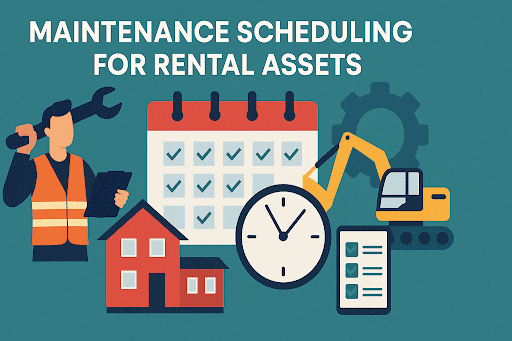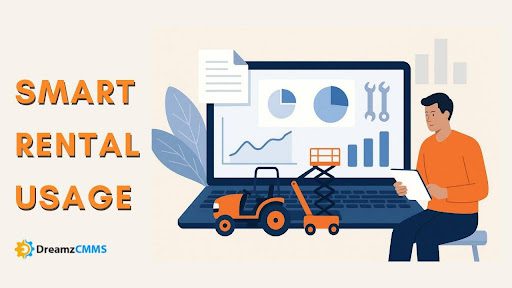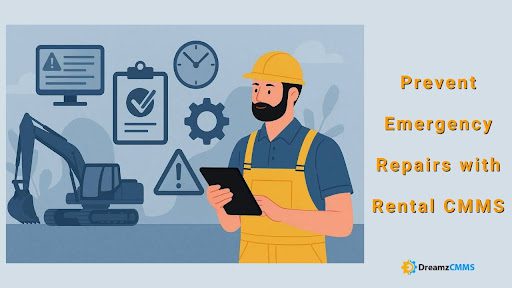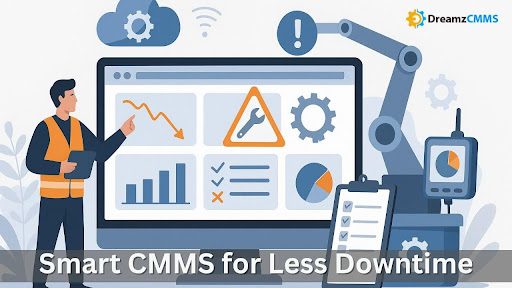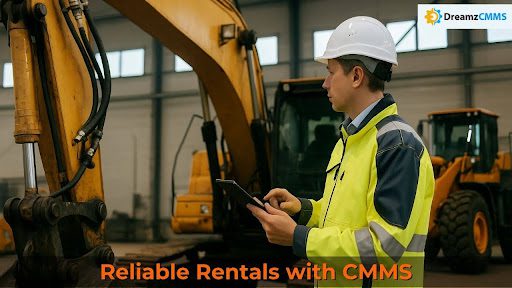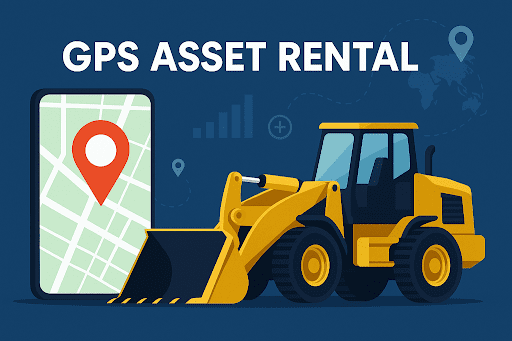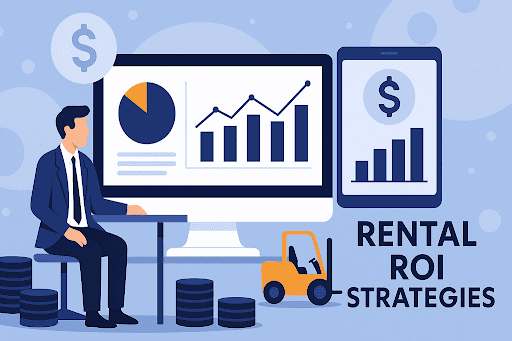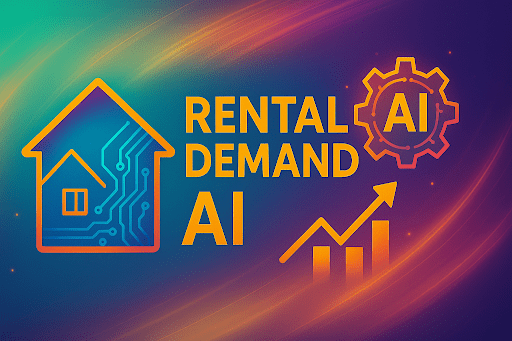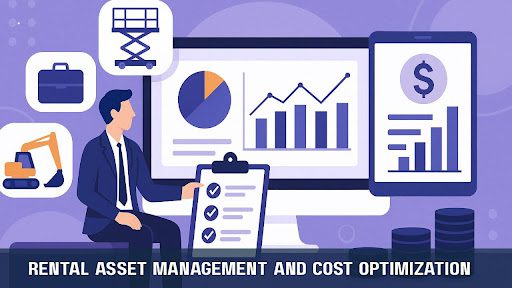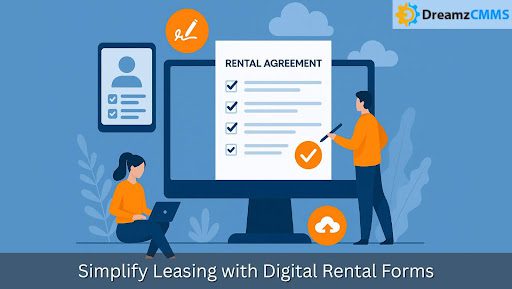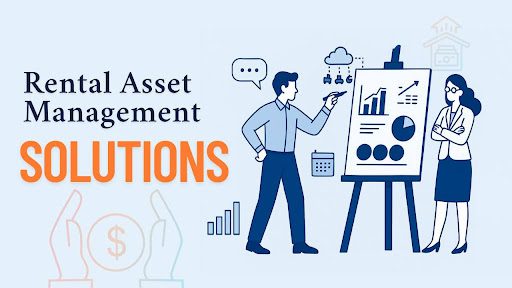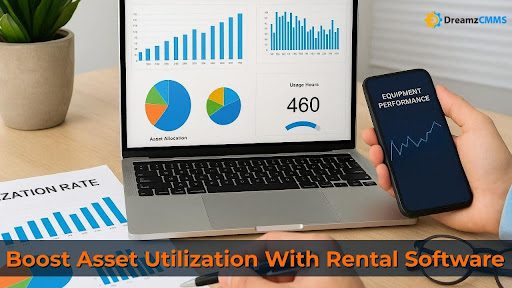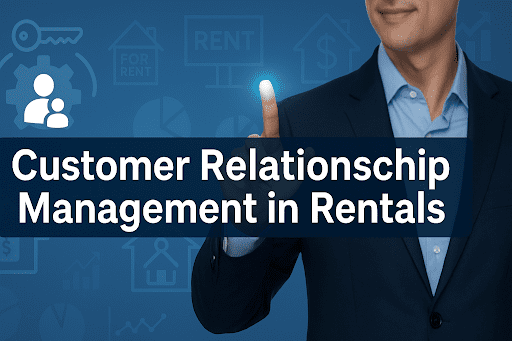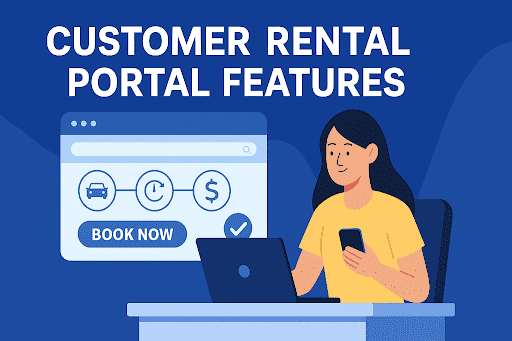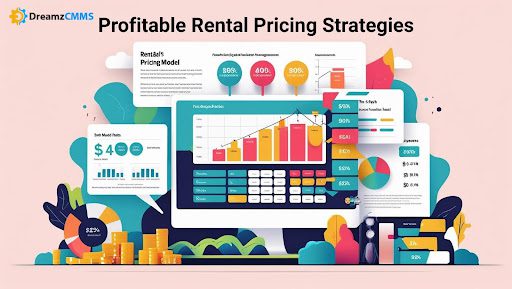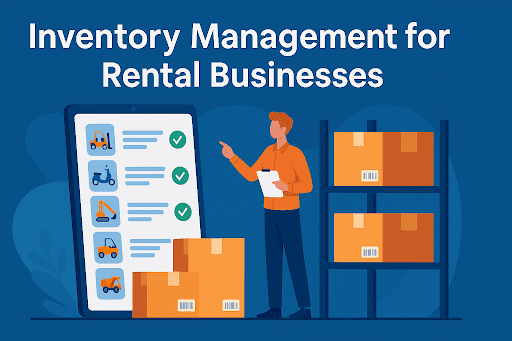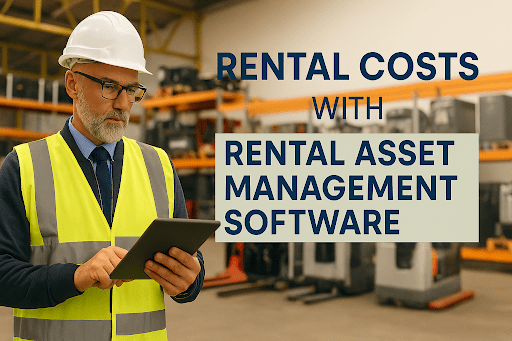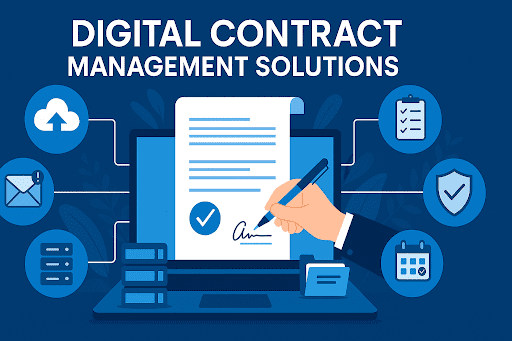 BACK TO Blog
BACK TO Blog
Asset Rental Management
Rental Asset
The rental industry moves at a rapid pace which means profit margins come from both the frequency of equipment rentals and smart management practices. The path to maximum rental equipment ROI involves moving beyond basic transactional operations into proactive data-based methods which smart technology enables. The construction machinery shortage has
- May 22, 2025
- DreamzCMMS Team
- 10 minutes read
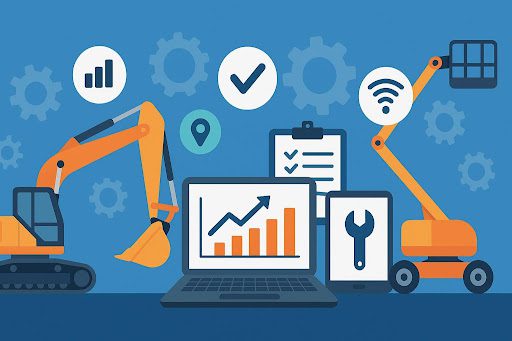
- May 22, 2025
- DreamzCMMS Team
- 10 minutes read
The rental industry moves at a rapid pace which means profit margins come from both the frequency of equipment rentals and smart management practices. The path to maximum rental equipment ROI involves moving beyond basic transactional operations into proactive data-based methods which smart technology enables.
The construction machinery shortage has prompted companies to use intelligent platforms and automation for operational optimization which reduces costs and improves equipment availability. The following article demonstrates how equipment rental optimization together with asset utilization strategies and CMMS for rental asset tracking systems deliver essential value to your rental return on investment (ROI).
Looking to streamline your rental maintenance process from Day 1?Discover how Asset Maintenance Management Software helps reduce downtime, automate inspections, and keep your rental equipment operating at peak performance. |
Understanding ROI in the Rental Business
The Return on Investment (ROI) calculation for equipment rental determines profitability by comparing asset-generated income to complete ownership and operational and maintenance expenses.
ROI can be maximized by:
- Increasing asset uptime and utilization
- Lowering maintenance costs
- Extending asset lifespan
- Enhancing customer satisfaction and retention
The achievement of these objectives becomes possible through a unified rental equipment management system.
Key Challenges to ROI Optimization
The following essential obstacles must be acknowledged prior to implementing optimization strategies for rental operations profitability:
1. High Idle Time
When equipment remains idle or underused businesses needlessly lose money from their investments. Asset utilization strategies serve as the only effective way to prevent rapid ROI reduction.
2. Downtime and Reactive Maintenance
Unscheduled breakdowns affect revenue and increase maintenance expenses. Rental equipment businesses require proven downtime reduction methods together with scheduled maintenance systems to maintain market leadership.
3. Inefficient Tracking and Scheduling
Rental coordination becomes disorganized when asset movement tracking and usage data management occurs through uncentralized systems which leads to delayed operations and customer complaints.
4. Lack of Performance Data
Organizations that lack access to equipment usage analytics cannot identify potential opportunities for lifecycle planning or forecasting.
Smart Management Principles to Maximize ROI
Business success in competitive rental markets requires organizations to move past conventional operations by implementing smarter integrated solutions. A rental equipment company maximizes its return on investment when technology and data integration work alongside agile processes to manage assets from start to finish. The following three fundamental principles serve to transform rental operations:
1. Centralized Asset Control
Smart asset management relies on a single unified cloud-based system as its fundamental element. The system delivers real-time monitoring of equipment status together with location and availability data which improves dispatch operations while responding faster. The built-in maintenance scheduling together with automated alerts within this system enables lifecycle management of rentals by maintaining assets for proactive use.
- Improves scheduling accuracy and reduces idle equipment time
- Supports better planning for peak rental demand and maintenance windows
2. CMMS for Rental Asset Tracking
A Computerized Maintenance Management System (CMMS) allows users to manage all maintenance activities and service records and work orders within a unified platform. The system performs automatic maintenance inspections and maintains asset records and provides immediate access to asset performance information. The system allows teams to perform preventive measures before problems become major issues thus enhancing both asset availability and decreasing administrative expenses.
- The automated process creates and tracks work orders with reduced manual effort.
- The automated process creates and tracks work orders with reduced manual effort.
3. Predictive and Preventive Maintenance
Smart businesses have progressed beyond scheduled maintenance by implementing IoT sensors and analytics to predict equipment failures. Real-time data analysis through predictive maintenance models allows organizations to identify issues early so they can perform timely interventions which extend equipment life and prevent unexpected breakdowns. The transition from reactive to proactive maintenance methods cuts down operational disruptions which leads to better rental equipment return on investment through extended equipment rotation periods.
- Detects early signs of wear or misuse before costly failures occur
- Reduces long-term maintenance expenses and enhances fleet uptime
Equipment Rental Optimization Best Practices
Business success in rental operations depends on how organizations track equipment assets while determining rental prices and deployment methods. Four core optimization practices help manage equipment rentals to maximize rental equipment return on investment:
1. Track Utilization with Smart Metrics
The first step of rental optimization requires monitoring equipment performance through data-based performance indicators. The rental performance of equipment depends on four essential metrics that include utilization rate and rental day maintenance expenses and equipment downtime percentage and asset revenue generation. These performance metrics enable data-driven decisions regarding asset maintenance and rotation or retirement for underperforming and overused equipment. Smart tracking technology reveals patterns of equipment usage between different asset types which helps businesses determine their upgrade and fleet reorganization strategies.
2. Strategic Fleet Management
A rental operation succeeds through its well-aligned equipment distribution rather than through fleet size. Rental companies achieve optimal inventory management by analyzing seasonal trends together with project requirements and usage history. Rental companies optimize their equipment fleet by minimizing their stock of unused assets and phasing out expensive items with low usage and investing in high-rental-value machines. The approach enables businesses to avoid unnecessary capital spending by maximizing asset turnover and availability. Optimizing costs through physical space analysis of rental asset storage and deployment plays an important role. Use space utilization analytics to enhance operational planning alongside resource allocation processes.
3. Dynamic Rental Pricing
The ability to set flexible prices serves as a strong revenue-enhancing method. Through the implementation of intelligent systems that adjust prices according to availability, market conditions and customer data businesses can earn higher profits when demand is high and maintain competitive rates when demand is low. The profitability increases through the implementation of tiered pricing systems combined with bundle deals and loyalty promotions for loyal customers. These strategies become more effective when equipment usage data is used to determine rental prices based on actual asset worth and current market prices.
4. GPS and Telematics for Real-Time Data
Rental operations become more efficient through the implementation of GPS and telematics systems which deliver real-time data access. The system provides businesses with exact details about asset positions and utilization hours and idle times and fuel consumption data. The visibility from these systems enables better logistical planning and ensures timely maintenance and supports accurate usage-based billing. The ability to track locations increases both security measures and protects against unauthorized equipment use and theft incidents. Telematics used in rental asset performance monitoring helps organizations develop a responsive and lean operation when combined with tracking data. RFID Asset Tracking Software provides enhanced tracking accuracy through real-time location information combined with usage records and asset condition monitoring. Advanced systems enhance logistics operations and minimize losses while supporting billing models based on equipment usage.
Maximizing ROI with Maintenance Scheduling and CMMS
Maintenance functions as a vital operational foundation which drives rental business profitability.
Benefits of CMMS in Rental Equipment Maintenance:
- Streamlines inspections and repairs
- Prevents missed services and compliance issues
- Enables documentation of every asset's service history
- Supports mobile access for technicians in the field
Rental equipment maintenance scheduling for rental equipment allows companies to work toward eliminating downtime and reduce their service expenses.
Rental Lifecycle Management: The Bigger Picture
The lifecycle of rental assets can be broken into the following phases:
- Procurement
- Deployment
- Active Rental Period
- Servicing and Maintenance
- Resale or Retirement
Smart rental lifecycle management produces value from every phase while boosting ROI outcomes. Predictive analytics helps determine the ideal time for asset resale before its market value declines dramatically.
Enhancing Rental Lifecycle Management with Automation and Analytics
Rental operations face their most important yet frequently under-developed requirement in rental lifecycle management. Your fleet assets follow a predetermined path from acquisition until their retirement. Business operations face significant ROI reduction when they fail to implement automation because they miss crucial lifecycle checkpoints.
Intelligent automation enables rental companies to monitor each phase of asset existence with real-time data collection. Automated systems enable full visibility of asset status by tracking purchase dates and depreciation timelines and maintenance records together with information about resale readiness. The system generates upcoming lifecycle events through CMMS rental asset tracking integration which enables proactive decisions instead of reactive choices.
The early replacement of an old excavator before it requires major repairs will prevent substantial repair expenses while preventing lost rental income. The predictive triggers enhance operational efficiency which directly helps to reach maximum return on investment for rental equipment.
The combination of smart analytics platforms enables organizations to analyze lifecycle data across their entire fleet which produces information about which asset types deliver the best value in the long run. What specific brands or equipment models lead to frequent downtime occurrences? Which equipment underperforms within particular geographic areas? These critical insights enable organizations to make strategic procurement and resale decisions which are fundamental for rental investment returns.
Implementing Proactive Downtime Reduction Techniques
Any rental business faces revenue destruction through downtime which operates as an invisible force. The combination of unplanned equipment repairs together with delayed maintenance procedures and scheduling issues results in equipment downtime that directly affects profitability. Your operations require the implementation of systematic downtime reduction methods which need to be established throughout all aspects of your business.
The combination of maintenance scheduling with IoT-based condition monitoring forms an effective strategy for rental equipment management. Telematics sensors provide real-time data about engine hours and oil pressure together with temperature variations and fuel consumption metrics. A predefined threshold breach in any system parameter will automatically trigger a maintenance request through the CMMS.
Digital inspection forms along with mobile checklists used by field teams enable immediate reporting of early wear signs which prevents failures from becoming critical. Standardized pre- and post-rental inspections improve both accountability and reduce the frequency of disputes and damage claims.
Proactive maintenance techniques help extend equipment lifespan while enabling better planning of fleet availability which prevents high-demand assets from becoming idle during peak rental seasons. Such intelligent operations create sustainable long-term profitability through cost-effective equipment usage.
Future-Ready Rental Equipment Management
Success in today's rental environment demands companies to transcend basic rentals by developing innovative solutions. The future direction of rental operations includes:
1. AI-Driven Demand Forecasting
Historical market information enables the prediction of upcoming demand surges.
2. Mobile-First Platforms
The platform enables field technicians together with customers to access bookings along with documentation and checklists from any location.
3. Blockchain-Powered Contracts
Smart rental contracts based on blockchain technology enhance trust while making it easier to settle disputes.
Conclusion
The rental industry now focuses on equipment management expertise rather than possessing the largest equipment collection. Rental asset performance tracking and scheduled maintenance for equipment rentals available in the market today allows businesses to enhance their financial outcomes.
The key to achieving maximum return on investment from rental equipment depends on selecting intelligent rental choices. Are you ready to make them? Do you have the ability to control your rental operations? You can achieve real-time scheduling, tracking and asset lifecycle insights through our Asset Rental Management Software within one unified platform.
Ready to Maximize Your Rental ROI?Take the guesswork out of rental operations with data-driven tools built for performance, uptime, and profitability. Whether you're managing a small fleet or a multi-location operation, DreamzCMMS provides the smart foundation you need to scale. Explore our full range of solutions: DreamzCMMS Want to see it in action? Book a Free Demo today and discover how our platform can help you reduce downtime, track assets in real-time, and increase rental profitability. |
Ready for More?
Talk to one of our CMMS experts and see how DreamzCMMS can simplify your maintenance operations.
Book a free consultation